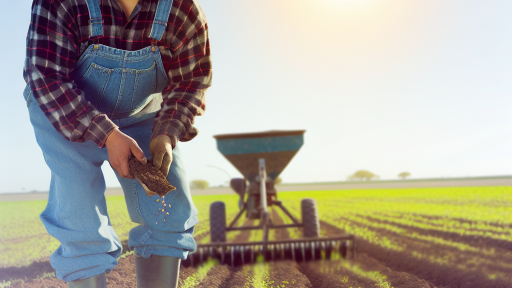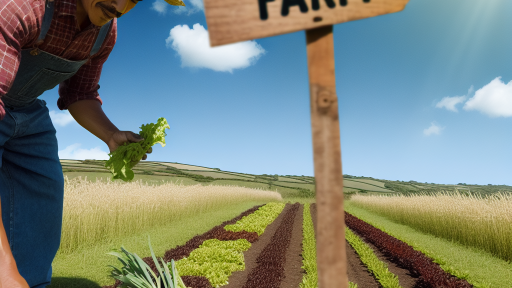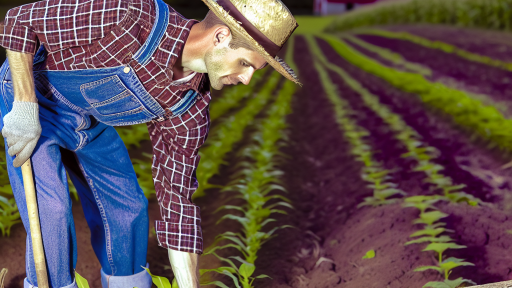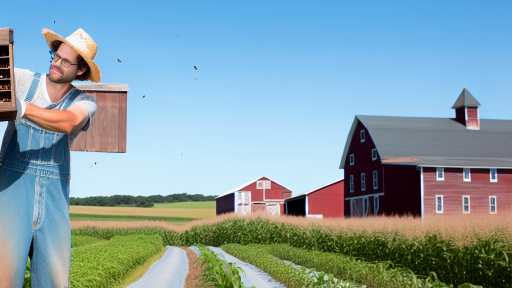Introduction to Soil Erosion and Its Impacts on Agriculture
Soil erosion presents a significant challenge to agriculture today.
This natural process involves the removal of topsoil layers, which are crucial for plant growth.
Over time, the loss of soil can lead to reduced agricultural productivity.
Farmers must address soil erosion to protect their crops and livelihoods.
Understanding the Causes of Soil Erosion
Various factors contribute to soil erosion, including water, wind, and human activity.
For example, heavy rainfall can wash away unprotected soil.
Similarly, strong winds can lift and carry away fine particles from the land.
Additionally, poor farming practices can accelerate erosion rates.
The Consequences of Soil Erosion
The impacts of soil erosion extend beyond the fields.
It leads to degraded land and diminished crop yields.
Consequently, it threatens food security for communities reliant on agriculture.
Moreover, eroded soil can pollute waterways, harming aquatic ecosystems.
Mitigating Soil Erosion
Farmers can use various strategies to combat soil erosion effectively.
Implementing cover crops serves as one of the most effective methods.
These crops enhance soil structure and protect it from erosion forces.
Transform Your Agribusiness
Unlock your farm's potential with expert advice tailored to your needs. Get actionable steps that drive real results.
Get StartedAdditionally, farmers can adopt conservation practices, such as contour farming.
Definition and Purpose of Cover Crops in Soil Management
Cover crops are plants grown primarily to benefit the soil rather than for harvest.
They play a crucial role in maintaining soil health and preventing erosion.
Furthermore, cover crops enhance the overall productivity of agricultural land.
These plants protect the soil by covering it during non-crop seasons.
As a result, they reduce the impact of wind and water on bare soil.
Additionally, they improve soil structure and promote water absorption.
Benefits of Cover Crops
Cover crops provide multiple benefits for soil management.
They improve organic matter content in the soil.
This increase boosts nutrient cycling and supports healthy microbial activity.
Moreover, cover crops help suppress weeds effectively.
They compete for resources, reducing weed growth and seed bank accumulation.
Cover crops also help fix nitrogen in the soil.
Leguminous cover crops, in particular, enhance nutrient availability for subsequent crops.
Types of Cover Crops
Various types of cover crops are suitable for different agricultural practices.
Legumes, such as clover and vetch, are commonly used for nitrogen fixation.
Grasses like rye and oats are ideal for erosion control.
Brassicas, such as radish, can help break up compacted soil.
Farmers should select cover crops based on specific soil needs and local conditions.
Key Benefits of Using Cover Crops to Prevent Soil Erosion
Enhancing Soil Structure
Cover crops significantly improve soil structure.
They help bind soil particles together, reducing erosion.
As roots grow, they create channels for water infiltration.
This promotes better drainage and reduces runoff.
Well-structured soil supports healthy crop growth.
Showcase Your Farming Business
Publish your professional farming services profile on our blog for a one-time fee of $200 and reach a dedicated audience of farmers and agribusiness owners.
Publish Your ProfileReducing Soil Loss
Cover crops act as a protective barrier against erosion.
They shield the soil from wind and water impact.
This reduces the velocity of water runoff.
Consequently, less soil is displaced during storm events.
Ultimately, this minimizes long-term soil loss.
Improving Soil Fertility
Generally, cover crops enhance nutrient availability in the soil.
They capture nitrogen, preventing its leaching into water bodies.
Moreover, decomposing cover crops add organic matter.
This promotes microbial activity and improves soil health.
Healthy soil provides better nutrition for subsequent crops.
Promoting Biodiversity
Cover crops contribute to biodiversity on farms.
Different species attract various beneficial insects.
This natural pest control reduces reliance on chemicals.
Increased biodiversity supports overall ecosystem health.
Ultimately, this leads to more resilient farming systems.
Enhancing Water Retention
Cover crops help enhance water retention in the soil.
Their roots create spaces that capture and hold water.
This is particularly beneficial during dry seasons.
Increased moisture helps sustain crops longer.
Thus, farmers experience less drought stress on their fields.
Cost-Effective Erosion Control
Utilizing cover crops is a cost-effective erosion control method.
They reduce the need for expensive erosion control structures.
Additionally, they contribute to lower nutrient input costs.
In the long run, cover crops boost farm profitability.
This economically supports sustainable farming practices.
Learn More: Benefits of Organic Farming for Sustainable Agriculture
Top Cover Crops for Erosion Control: An Overview
The Importance of Cover Crops
Cover crops play a crucial role in preventing soil erosion.
They help maintain soil structure and health.
Additionally, these crops enhance water retention in the soil.
Common Types of Cover Crops
Various cover crops are effective for erosion control.
Legumes, such as clover, are popular choices.
They fix nitrogen, enriching the soil.
Moreover, grasses like rye and oats provide ample ground cover.
These grasses have deep root systems that stabilize soil.
Benefits of Cover Crops
- Soiα Organic Matter: They increase organic matter in the soil.
- Pest Control: Cover crops can reduce pest populations naturally.
- Weed Suppression: They help to suppress weed growth.
When to Plant Cover Crops
Timing is essential for planting cover crops.
Typically, farmers plant them after the main crop harvest.
This practice allows the soil to remain covered during fall and winter.
Consequently, it prevents erosion during heavy rains.
Best Practices for Cover Crop Management
Proper management enhances the benefits of cover crops.
Farmers should monitor soil conditions and moisture levels.
Showcase Your Farming Business
Publish your professional farming services profile on our blog for a one-time fee of $200 and reach a dedicated audience of farmers and agribusiness owners.
Publish Your ProfileRegular assessments help determine the right species to plant.
Additionally, terminating cover crops at the right time is crucial.
This ensures sufficient biomass while allowing space for the main crop.
Discover More: Cover Crops for Enhancing Organic Soil Health
Top Cover Crops to Prevent Soil Erosion
Understanding Cover Crops
Cover crops play a vital role in preventing soil erosion.
They provide ground cover that shields soil from weather impacts.
Moreover, these crops enhance soil structure and fertility.
Legume Cover Crops
Legumes are excellent for improving soil nitrogen levels.
Common examples include clover, vetch, and peas.
These plants fix atmospheric nitrogen, enriching the soil.
Additionally, their root systems help bind the soil together.
Clover Varieties
Crimson clover is a popular choice for many farmers.
It germinates quickly and grows rapidly during the fall.
This helps prevent soil erosion during winter months.
Vetch Benefits
Vetch offers resilience in poor soil conditions.
It establishes deep roots that stabilize soil layers.
Also, it provides excellent biomass for soil improvement.
Grassy Cover Crops
Grassy cover crops prevent erosion effectively with their extensive root systems.
They include species like rye, barley, and oats.
These crops are known for their ability to hold soil in place.
Rye Advantages
Cereal rye is one of the most robust cover crops.
It grows quickly and provides significant ground cover.
This crop also competes well with weeds, reducing their impact.
Oats and Barley
Oats thrive in cooler weather and help prevent erosion.
Barley serves a similar purpose, offering quick establishment.
Both crops contribute organic matter to the soil upon decomposition.
Perennial Cover Crops
Perennial cover crops provide long-term erosion control.
Examples include alfalfa, perennial ryegrass, and chicory.
These plants grow year after year, establishing deeper root systems.
Alfalfa’s Role
Alfalfa is particularly effective in improving soil structure.
Its deep roots break up compacted soil layers.
Additionally, it enhances nitrogen levels in the soil.
Chicory Benefits
Chicory’s taproot penetrates deep into the soil.
This improves water infiltration and reduces runoff.
It also provides forage for livestock during fall and winter.
Choosing the Right Cover Crop
Selecting suitable cover crops depends on specific soil and climate conditions.
Farmers should assess their goals and local environment.
Incorporating a mix of cover crops often yields the best results.
Ultimately, these practices lead to healthier soils and reduced erosion.
Gain More Insights: Managing Organic Farms with Precision Agriculture
Showcase Your Farming Business
Publish your professional farming services profile on our blog for a one-time fee of $200 and reach a dedicated audience of farmers and agribusiness owners.
Publish Your Profile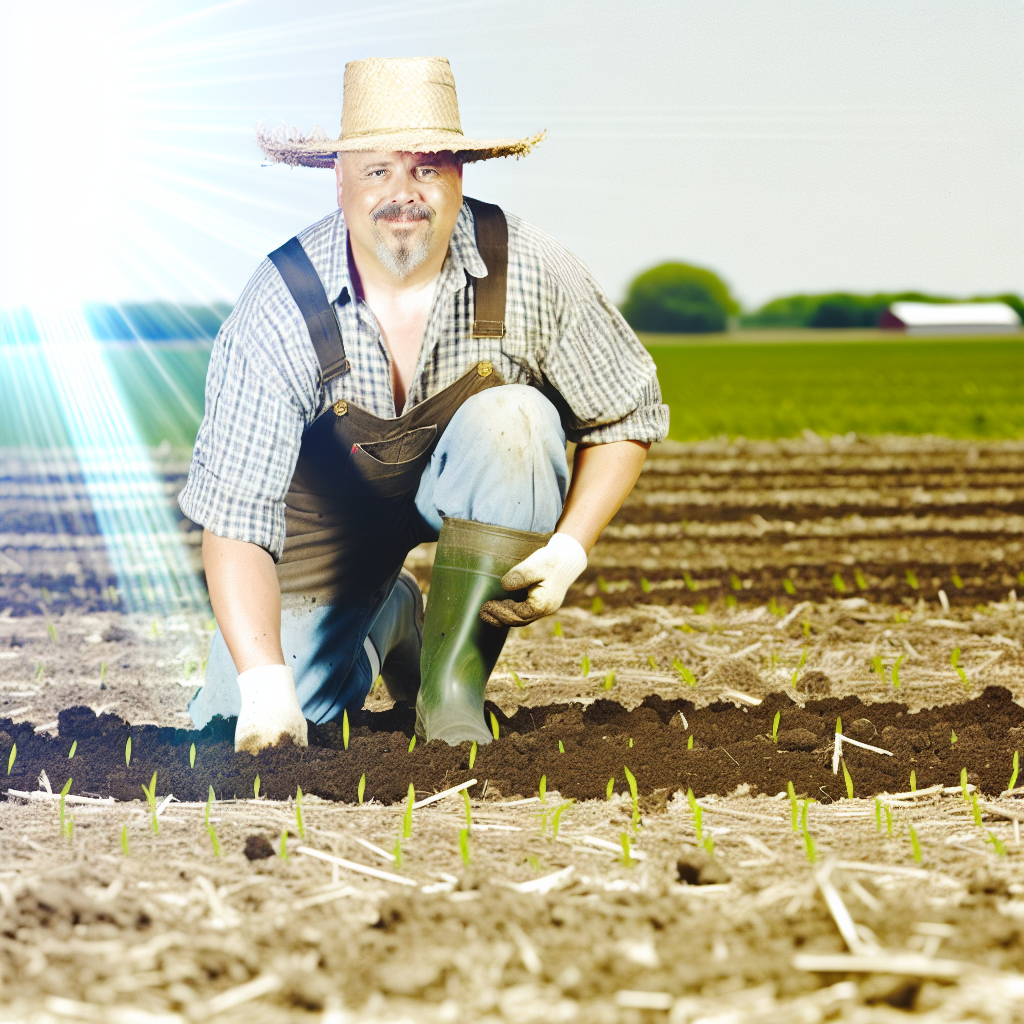
Effective Management Practices for Growing Cover Crops
Choosing the Right Cover Crops
Select cover crops that suit your climate and soil type.
Consider leguminous crops for nitrogen fixation.
Non-legumes can control erosion effectively.
Furthermore, select species compatible with your main crops.
Soil Preparation and Seeding
Prepare the soil properly before seeding cover crops.
Ensure good seed-to-soil contact for better germination.
Consider no-till practices to prevent soil disturbance.
Moreover, timing is critical; plant cover crops at the right season.
Monitoring and Maintenance
Regularly monitor cover crop health and growth.
Address pests and diseases promptly to avoid crop loss.
Utilize appropriate weed control methods during growth.
Additionally, manage water needs based on climate conditions.
Termination and Incorporation
Plan the termination of cover crops effectively.
Use mechanical or chemical methods based on your needs.
Incorporate the cover crops into the soil to enhance fertility.
This will enrich the soil and promote organic matter.
Subsequently, adjust tillage practices as necessary.
Evaluating Cover Crop Effectiveness
Assess the impact of your cover crops on soil health.
Evaluate how well they have controlled erosion.
Consider soil tests to measure nutrient levels after incorporation.
Use this data to inform future planting decisions.
Explore Further: Organic Crop Planning for Year-Round Success
Case Studies
Midwest Corn Belt
Farmers in Iowa have successfully implemented cover crops.
They mainly used cereal rye and clover during the winter months.
This practice reduced soil erosion by 30% over three years.
Additionally, it improved soil structure and organic matter.
Southern U.S. Regions
In Georgia, cotton farmers made a shift towards using cover crops.
They adopted winter legumes like hairy vetch and crimson clover.
This led to enhanced nitrogen levels in the soil.
Consequently, it reduced the need for synthetic fertilizers.
California’s Central Valley
Farmers growing tomatoes increasingly rely on cover crops.
They use a mix of brassicas and legumes.
This approach conserves soil moisture and mitigates salinity issues.
Moreover, it helps suppress weed growth effectively.
Northeast Pastures
In New York, dairy farmers implemented a diverse cover crop mix.
The mix includes oats, radishes, and peas.
This strategy significantly reduced runoff from heavy rains.
As a result, it also improved forage quality for livestock.
Pacific Northwest
Wheat producers in Washington have turned to cover cropping.
They focus on using daikon radish and clover for soil health.
Showcase Your Farming Business
Publish your professional farming services profile on our blog for a one-time fee of $200 and reach a dedicated audience of farmers and agribusiness owners.
Publish Your ProfileThis combination helps break compacted soil layers.
Additionally, it enhances infiltration of rainfall.
Future Trends in Cover Cropping and Soil Conservation Strategies
Innovative Cover Cropping Techniques
Farmers are increasingly adopting innovative cover cropping techniques.
These methods enhance soil health and prevent erosion effectively.
For instance, multi-species cover crops are gaining popularity.
Using diverse plant species offers multiple benefits to the soil.
Moreover, it helps retain moisture and improve nutrient cycling.
Technological Advancements in Agriculture
Technology is reshaping cover cropping practices.
Farmers now utilize precision agriculture tools efficiently.
These tools assist in monitoring soil health and crop growth.
In addition, drones provide vital data for better decision-making.
Farmers can identify problem areas quickly and accurately.
Policy Changes and Support Systems
Government policies are evolving to support sustainable practices.
Programs incentivize cover cropping and soil conservation initiatives.
For example, grants for adopting these practices are becoming more common.
Such support encourages farmers to try sustainable methods.
Ultimately, it enhances the resilience of agricultural systems.
Education and Community Engagement
Education plays a crucial role in promoting cover cropping strategies.
Workshops and training programs provide essential information to farmers.
Moreover, agricultural extension services offer ongoing support.
Community engagement fosters collaboration and knowledge sharing.
This approach empowers farmers to implement effective practices.
The Role of Research and Development
Research is vital in advancing cover cropping methodologies.
Universities and institutions are conducting valuable studies.
These studies focus on the benefits of various cover crops.
Additionally, they explore their impact on soil conservation efforts.
Collaborative research efforts will pave the way for innovative solutions.

